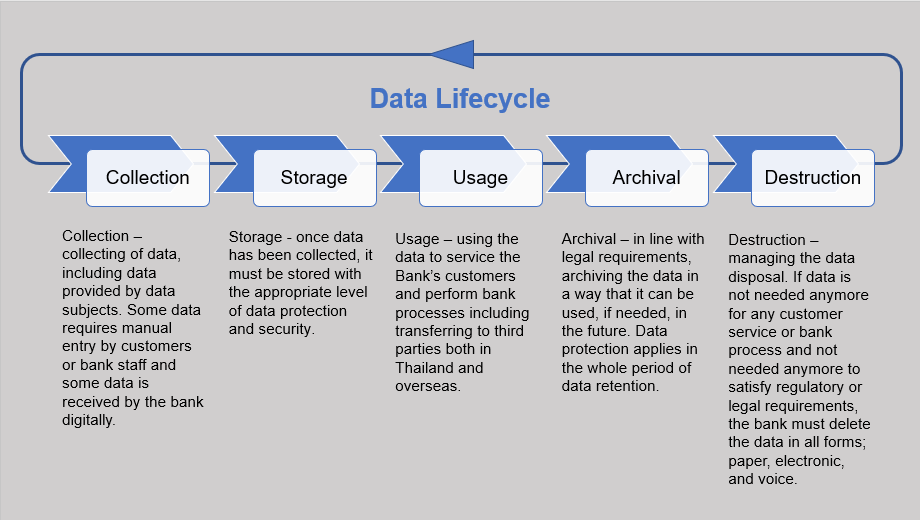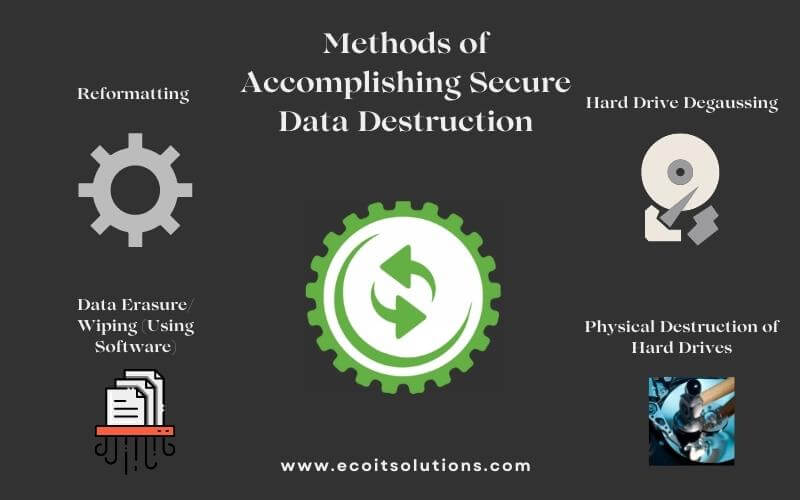Data Destruction Solutions: A Key Element in Your Cyber Security Strategy
Wiki Article
Checking Out the Significance of Data Devastation in the Context of Computer System Safety And Security Services and Protecting Confidential Information
In an era where data breaches are increasingly common, the importance of effective information destruction can not be overstated. What techniques can organizations execute to boost their data destruction protocols?Comprehending Information Damage
Data damage is a vital part of computer protection that involves the irreversible removal of data from storage space tools to avoid unauthorized access and prospective information breaches. In an increasingly electronic landscape, companies deal with heightened dangers connected with sensitive info being improperly accessed or exploited. Efficient information destruction safeguards versus these threats, guaranteeing that personal dataâEUR" such as customer information, copyright, and financial recordsâEUR" can not be recouped after disposal.Recognizing the relevance of data damage extends past mere compliance with regulatory and lawful structures; it is important for maintaining organizational integrity and trust fund. When data is incorrectly handled or inadequately ruined, the effects can be severe, including monetary loss, reputational damages, and lawful responsibilities.

Techniques of Information Elimination

One common method is information cleaning, which includes overwriting existing data with arbitrary patterns numerous times. This strategy renders the initial data irretrievable, making it a popular selection for organizations looking for to safeguard secret information.
One more approach is degaussing, which makes use of an effective electromagnetic field to disrupt the magnetic domains on storage gadgets, efficiently erasing the information. This strategy is particularly effective for magnetic media yet is not suitable to solid-state drives.
Physical destruction is another robust method, entailing the shredding or crushing of storage space gadgets. This method guarantees that data healing is practically impossible, making it excellent for extremely sensitive details.
Finally, security can offer as a corresponding method to data removal. By encrypting information before removal, companies can include an additional layer of security, ensuring that even if residues are recovered, they stay hard to reach without the decryption trick. Each technique should be chosen based upon the level of data level of sensitivity and the details safety needs of the company.
Legal Compliance and Information Protection
Organizations must navigate an intricate landscape of legal demands associated with data safety, particularly after carrying out methods of data elimination. Different guidelines, such as the General Information Security Guideline (GDPR) and the Wellness Insurance Policy Portability and Liability Act (HIPAA), impose stringent guidelines on exactly how companies have to manage and get rid of of sensitive information. Failing to comply with these policies can lead to substantial lawful repercussions, including considerable penalties and reputational damages.Information damage procedures should be carefully documented to demonstrate compliance with suitable regulations and criteria. This paperwork not only functions as evidence of adherence to legal obligations but likewise illustrates a dedication to protecting sensitive details. Organizations needs to also establish clear plans pertaining to information retention and damage timelines, ensuring that information is not held longer than required.

Moreover, routine audits and assessments of information devastation methods are necessary to keep compliance and adapt to progressing legal frameworks (data destruction). By proactively addressing lawful needs, companies can reduce threats linked with information breaches and demonstrate their commitment to information protection. Ultimately, prioritizing legal conformity in information destruction processes is not simply a regulative responsibility, but a basic facet of a robust a knockout post information protection approach
Impact on Organization Reputation
The track record of a business can be considerably impacted by its technique to information damage and management. In today's electronic landscape, where data breaches can take place at any moment, the failing to properly dispose of delicate details can cause severe effects. Organizations that improperly take care of data damage risk subjecting personal customer information, which not just data destruction goes against privacy regulations yet likewise erodes trust amongst stakeholders and clients.A ruined online reputation can result in lowered consumer commitment, as customers end up being hesitant to engage with an organization that has actually demonstrated neglect in safeguarding their data. Adverse attention surrounding a data breach can have a long lasting result, as prospective clients could be deterred by the regarded absence of protection. This can result in a straight decline in income and market share.
Additionally, businesses that focus on information damage as component of their safety and security technique can enhance their reputation by showcasing their dedication to protecting delicate info. By taking on strict information administration methods, companies can not just alleviate dangers however likewise place themselves as credible entities in their corresponding markets, consequently reinforcing their overall brand name image.

Finest Practices for Secure Disposal
Carrying out ideal methods for secure disposal of information is essential for mitigating risks related to data breaches and guaranteeing compliance with privacy laws. Organizations should adopt a thorough information disposal policy that outlines procedures for both physical and electronic information devastation.For physical data storage space tools, such as hard disk drives, shredding or degaussing is recommended to prevent data healing. Furthermore, organizations need to maintain a chain of custodianship paperwork during the disposal process, making sure accountability and traceability of disposed items.
For electronic information, making use of software that follows sector criteria for data wiping is essential. This software ought to overwrite existing information numerous times, making recuperation virtually difficult. It is also essential to verify the effectiveness of the information damage process through audits or third-party assessments.
Educating staff members on safe disposal methods adds one more layer of visit this page security, as human mistake can frequently bring about data exposure. Routinely updating and examining disposal policies makes sure alignment with progressing regulations and technical innovations. By applying these finest methods, companies can significantly minimize the danger of unauthorized information access and improve their general data defense strategy.
Final Thought
Finally, data damage is a fundamental element of computer system security solutions that ensures the security of personal info from unauthorized gain access to. Carrying out effective methods of information removal, sticking to lawful conformity, and acknowledging the effect on business reputation are necessary elements of a thorough data safety and security approach. By embracing finest techniques for protected disposal, companies can cultivate depend on with customers and protect sensitive information, eventually contributing to a much more secure digital landscape.In an era where data breaches are significantly common, the importance of efficient data destruction can not be overstated.Data destruction is a vital element of computer system safety that includes the irreversible elimination of data from storage space devices to avoid unauthorized gain access to and possible information breaches. Organizations ought to also develop clear policies relating to data retention and damage timelines, making sure that data is not held longer than needed.
By proactively resolving lawful needs, companies can alleviate risks linked with information violations and show their commitment to data safety and security (data destruction). Eventually, prioritizing legal compliance in information destruction processes is not simply a regulative responsibility, but a basic aspect of a durable data safety strategy
Report this wiki page